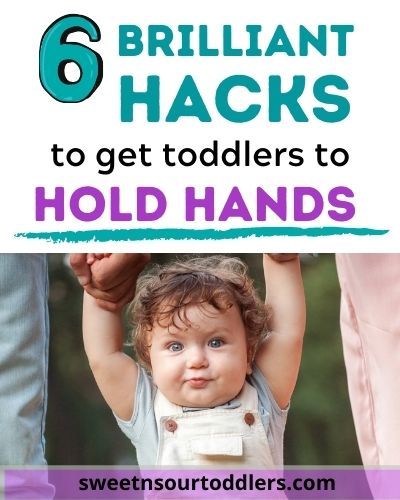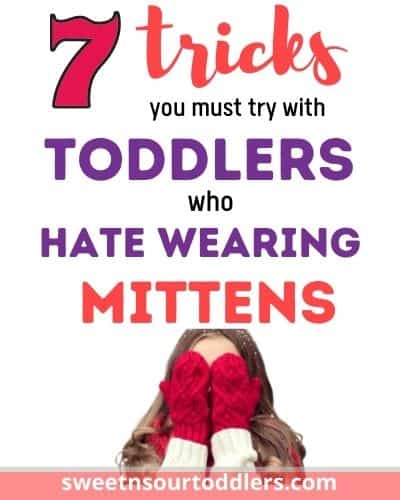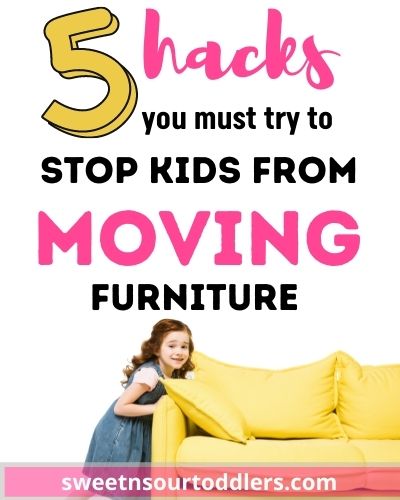Is your toddler dumping toys all the time? It’s only natural to feel frustrated. Here are 7 tactics you can try.
You’ve just finished tidying up your toddler’s room. Everything is neatly organized and exactly in place.
Then life happens.
Your toddler comes swantering into his room, grabs a few boxes of toys and wham. Mini toy cars, stuffed animals, lego pieces and blocks explode onto the floor in one big colorful mess.
Sound familiar? I’m pretty sure I’m not the only mom out there who finds this absolutely maddening.

So let’s go over some of the main reasons your toddler is always dumping toys on the floor. Then we can get to the good part: how to handle the dumping habit with some fail proof strategies.
This post is about a toddler dumping toys and what you should do about it.
Why do toddlers dump?
1. Learning about cause and effect
Toddlers are little scientists on the loose. They love to experiment and find out how things work.
Maria Montessori believed that all children behave like “little scientists” in that they are eager to observe and make “what if” discoveries about their world. Infants and toddlers test the environment to see what happens when, for example, they drop a toy out of their highchair or play with the water in their bath.
vvsd.org
Dumping teaches them about cause and effect. They learn that they can pick up a box of toys and throw it on the floor. This in turn will lead to toys falling on the floor with a resounding thud. It’s satisfying for them to know that they caused that to happen.
2. It’s a fun activity
Dumping is so much fun, especially for little kids. They get to see stuff fall onto a floor in one big pile with a loud sound. It’s thrilling and exciting!
3. They have too many toys
One if the biggest causes of toys being dumped all over is that the child has too many toys. He feels overwhelmed with all the stuff which prevents him from playing with each toy in a meaningful way.
According to child behavior experts, too many toys distract kids and reduce their focus. Many studies have suggested that playing with too many toys could affect the concentration level of kids and even hamper creativity, life skills, social interactions, imagination, mental health, and team spirit.
parenting.firstcry
4. To see your animated reaction
As parents, we might not realize this but our reactions to our toddler’s dumping might be very animated. And this overreaction on our part might actually be exacerbating the problem.
Kids love to get a big reaction from their parents (whether it’s negative or positive) and will increase their engagement in activities that get them that attention.
5. Toys stored inappropriately
Are the toys in your toddlers room stored in large storage bins? Sometimes this can be frustrating for your child – they are trying to find that one toy to play with but it’s buried under piles of other stuff. The solution they find? Dumping.
6. Developmentally inappropriate toys
It could very well be that some of the toys your toddler has in their room are not developmentally appropriate.
By this I mean that they are too young to even know how to play with the given materials. So instead of playing with it, they dump it.
7. Boredom
Sometimes it’s out of sheer boredom that a child will walk up to a bin of toys, dump it out and walk away. We are talking about toddlers after all.
7 Strategies to Try When Handling a Toddler Dumping Toys
This post contains affiliate links. As an Amazon Associate I earn from any qualifying purchases.
1. Provide Material for Dumping
Scooping, dumping, piling things up – these are all ways in which a child plays and learns about the world around him.
Try to provide your little one with a safe space and appropriate materials which can be dumped.
A sensory bin can help fulfil the need to dump. You can fill it up with all sorts of materials which your child can use for dumping play. This one comes with a sand and splash tub basin, a lid for easy storing and removable legs.
Bathtime can also be a great place to fulfil the dumping need. You can get your toddler some bathtime buckets which they can use to scoop, pour and dump water from. These ones by Skip Hop are parent favorites.
If you have a backyard or go frequently to the beach or park, you can get your older toddler (3 and up) digging equipment like toddler shovels and rakes for some dumping extravaganza.
2. Declutter Your Child’s Room
The ‘too many toys syndrome’ is real. And it prevents a child from playing with each toy with focus.
So.
Maybe you don’t want to hear this but it’s time to declutter your child’s room. This doesn’t mean getting rid of everything. Rather, go through your child’s toys and ask yourself some questions:
- Has my child outgrown this toy? You can donate these
- Has this toy been overplayed with, overused and has reached its maximum life? Throw these away
- Are there multiples of the same toy? Like too many sets of blocks or way too many stuffed animals? Keep some out and keep some away out of sight of your child
You’ll immediately start to notice (I noticed this with my kids!) that when they have LESS toys in their room they play with their toys MORE.
3. Keep Out Developmentally Appropriate Toys
Asses your child’s age, skill level and developmental stage – keep only those toys in their room which they can actually play with.
4. Use Toy Rotation
Toy rotation is brilliant. It’s literally a life changing hack especially for parents who are tired of picking up toys from the floor all day long.
And it’s simple. Keep some toys for your child to play with and store others away. Then a few weeks or months later, switch up the toys i.e. take out the stored toys and keep away the ones that had been out.
When you take out the stored toys they will seem brand new to your child. You’ll also start to notice that they play with each toy with greater focus and for longer durations.
5. Store Items Appropriately to Prevent Dumping
Organize your child’s room in such a way that they can easily reach for each item independently and keep it back in its place without the need to dump contents out. For example:
- Books can be stored in a bookcase which has individual pockets for storing each book
- Stuffed animals can be stored in over the door hanging storage with individual pockets for storing each doll/stuffy
- Puzzles/block pieces can be stored in individual clear plastic sealable bags that are placed inside a storage box
- Toys your child plays with very frequely can be displayed on the toy shelf within reach rather than being stored in a storage box
- For older toddlers, their art supplies can be stored in individual containers to separately store crayons, coloring pencils and paint supplies. And then they can be neatly arranged in a storage cart. This makes it superby easy for your toddler to access their art supplies without resorting to dumping
6. Make Tidying Up Fun
It’s never too early to teach your child to tidy up. Also that way, when he dumps his toys out (because despite your best efforts dumping will not leave his DNA) hell be able to clean up the mess he’s made.
“If you prevent children from participating in the upkeep of their environment, you are denying them valuable learning opportunities” says Amii Spark founder of The Olive Grove, a Montessori-based parent education and support service.
Teaching your toddler to tidy up isn’t hard. If you can make tidying up fun and use positive language when talking about tidying up, your child will learn to view clean up time as something enjoyable.
There’s a longer post I’ve written on effective strategies to teach a toddler to tidy up that you can go through.

7. Watch Your Reaction
Whats your reaction when you walk into a room and see your toddler has dumped stuff all over the floor?
Do you get angry? Or give time outs? Maybe you overreacted or seem visibly annoyed?
All these reactions on our part can sometimes lead a child to engage even MORE in the behavior we’re trying to discourage!
So try your best to keep your facial expressions neutral and use a calm voice (I know, easier said than done!)
This post was about a toddler dumping toys and what you should do about it.
Are you a mom that has to yell to get her kids to get anything done? Do you find yourself struggling with parenting and overcome with feelings of exhaustion and frustration? Are you dealing with tantrums, bedtime battles, whining and tons of mom guilt?
Positive parenting Solutions has a FREE webinar for parents which is jam packed with practical, tried and tested hacks that seriously work.
Learn why kids behave the way they do, how your personality contributes to many of the power struggles you face on a daily basis and the one simple strategy that can help restore the peace in your home.
CHECK OUT POSITIVE PARENTING SOLUTIONS
FAQs
Should I let my toddler throw toys?
It’s important to know that throwing toys is completely normal for toddlers and is simply a child’s way of experimenting with cause and effect. A great way to deal with this behavior is to give your child alternative things to throw. It’s also a good idea to turn their attention towards those things they are allowed to throw.
Why does my child break his toys?
Children are little scientists that love to discover new ways of using an object. Breaking a toy allows them to witness a new purpose for a toy and satisfy their curiosity. They may also have over-played with the toy and break it out of sheer boredom.
Are you a toddler parent? Here are some other posts you may enjoy:
Simple Steps On How to Disinfect and Clean Toys Safely and Easily
12 Easy Toddler Activities to Keep your Toddler Out of Trouble | No Prep Indoor Activities
6 Fascinating Reasons Why Toddlers Draw on Walls (And How You Can Stop Them)
Popar posts on the blog:
The Ultimate Guide to Toddler Proofing Your Home – Safety Hacks That Work
15 Best Bath Toys For Toddlers That Are Educational and Fun
10 Inspiring Ideas For Setting Up An Insanely Cute Toddler Reading Corner





This site was… how do you say it? Relevant!! Finally I have found something which helped me. Cheers!